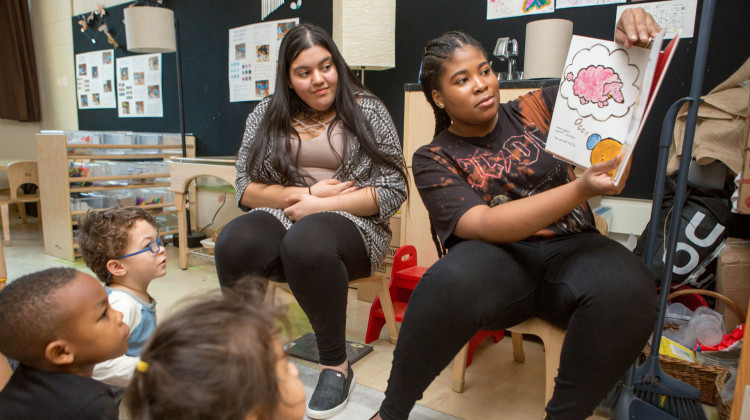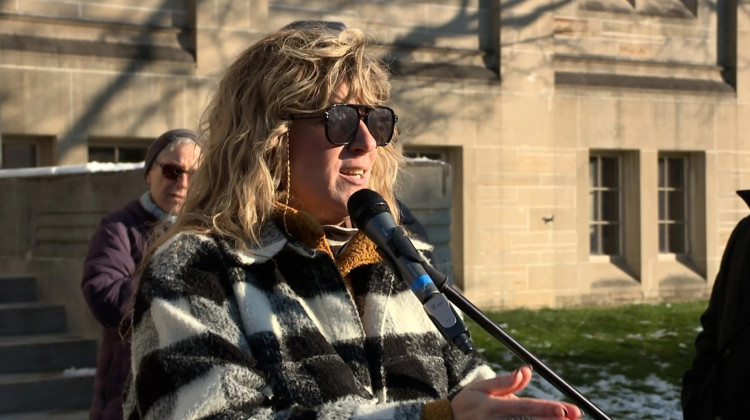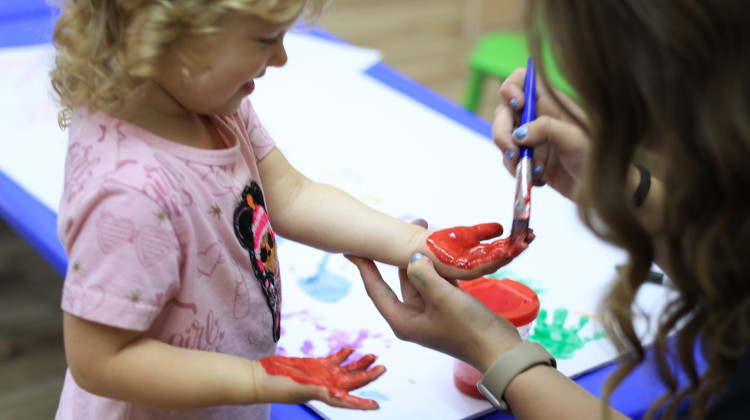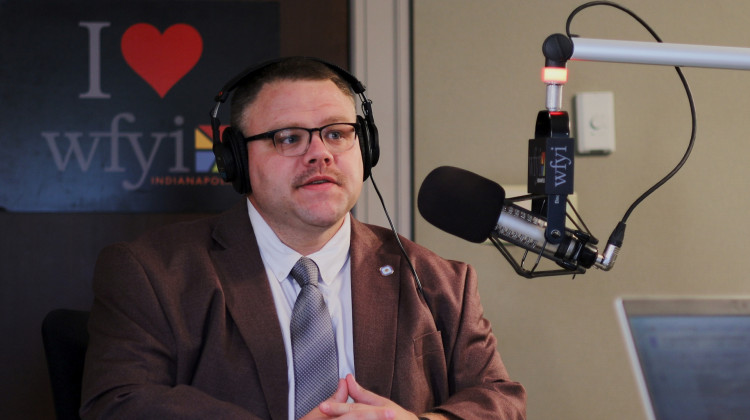
Indiana used temporary federal stimulus aid to support CCDF. But when that money ran out, lawmakers did not use state funds to sustain it.
Allison Shelley / The Verbatim Agency for EDUimagesIndiana officials expect the freeze on vouchers to help low-income, working parents pay for child care to continue through the end of 2026, according to a fiscal update Wednesday from the Family and Social Services Administration.
The state stopped issuing new vouchers last December, and nearly 31,000 children were on the waitlist as of September. Child Care and Development Fund, or CCDF, vouchers are largely paid for by the federal government. They help cover the cost of day care, preschool and before- and after-school care for eligible families.
The office “simply does not have the funding available to prudently begin enrollment before that date,” said Adam Alson, director of the Office of Early Childhood and Out-of-School Learning.
In addition to freezing enrollment in CCDF vouchers, the state cut the amount it pays to child care providers this month. As a result, some child care providers have been forced to reduce pay and lay off staff, while others have closed.
Continuing the waitlist through next year will push a growing number of parents out of the workforce, said Sam Snideman of the United Way of Central Indiana.
“That's going to have some pretty devastating implications for household economic stability and for the state's economic health,” said Snideman, the nonprofit’s vice president of government relations.
It could also have long-term costs for children who are not able to attend high-quality child care programs, he said. “I think that that will mean we will probably see some kids coming to school who aren't ready for school.”
Despite the impact child care providers face around the state, Alson defended the cuts to payment rates. He said the office prioritized the needs of families already enrolled in CCDF over child care providers.
“By lowering reimbursement rates, the state avoided forced mass disenrollment and kept current vouchers intact, ensuring continuity of care for thousands of children and preserving the ability for their parents to continue to work and to better their families lives,” Alson said.
Alson said that the root of the problem were decisions made under the administration of Gov. Eric Holcomb, who left office in January.
During the pandemic, the state used temporary federal aid to support CCDF. But when that money ran out, Indiana lawmakers chose not to use state funds to sustain expanded child care in the long-term. Instead, the legislature provided a short-term allocation last session designed to pay for vouchers for children who are already enrolled in CCDF.
In a statement, Early Learning Indiana said the organization recognized the financial challenge posed by the end of pandemic funding but the cuts are concerning.
“The most vulnerable children will be deprived of early learning opportunities, and parents will have to drop out of the workforce or forgo opportunities to further their education, or job training, which will have an impact not only on families but on the broader economic vitality in Indiana," the statement said.
As children enroll in kindergarten or parents withdraw from CCDF, participation has steeply declined. About 53,000 children receive vouchers as of September, down about 14% from the same month last year.
Alson did not say how many vouchers the program can support at its current funding level or exactly what target it had to meet to reopen enrollment.
"We are going to be extremely prudent and make sure that every voucher that we as an office enroll in the future that we can fund for as long as that family needs that voucher," Alson said.
Contact WFYI Education Reporter Dylan Peers McCoy at dmccoy@wfyi.org.
 DONATE
DONATE








 Support WFYI. We can't do it without you.
Support WFYI. We can't do it without you.